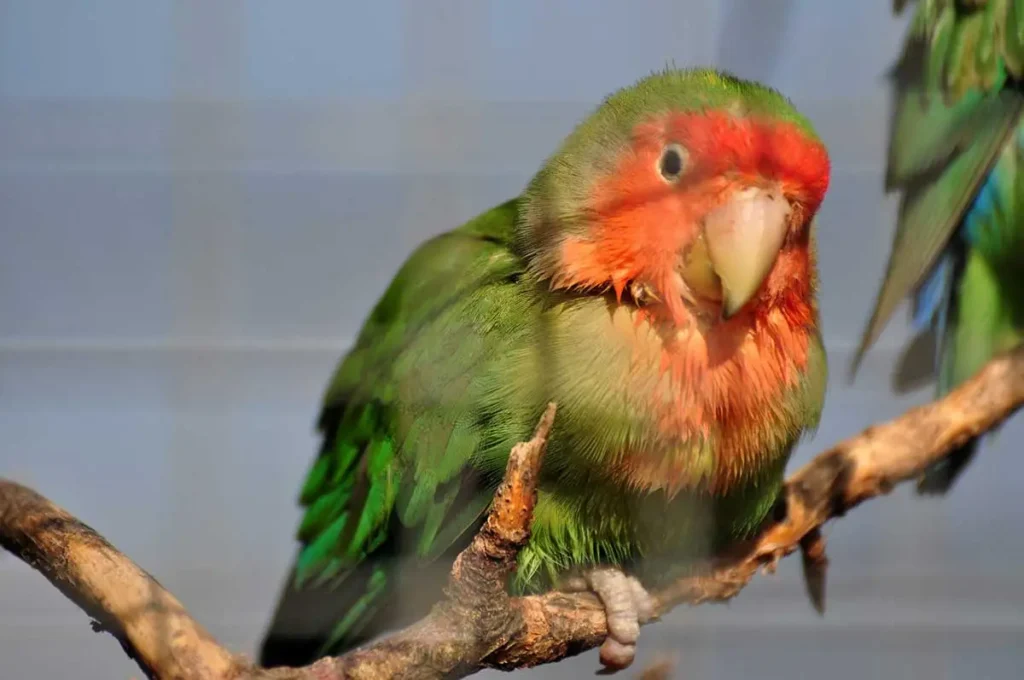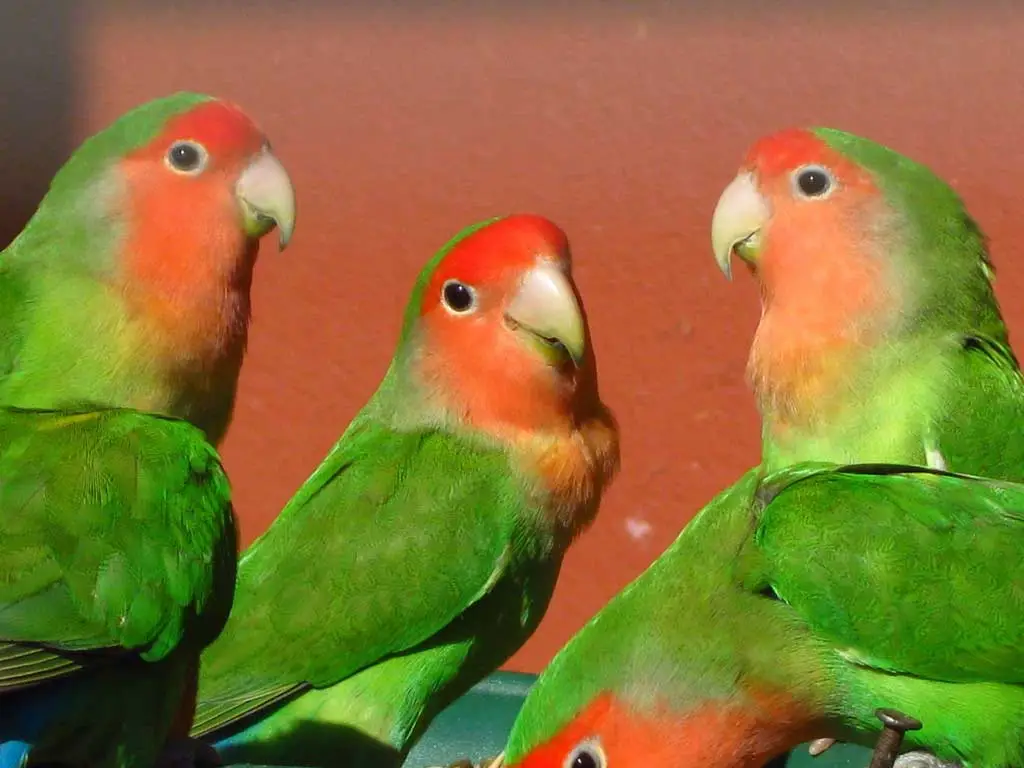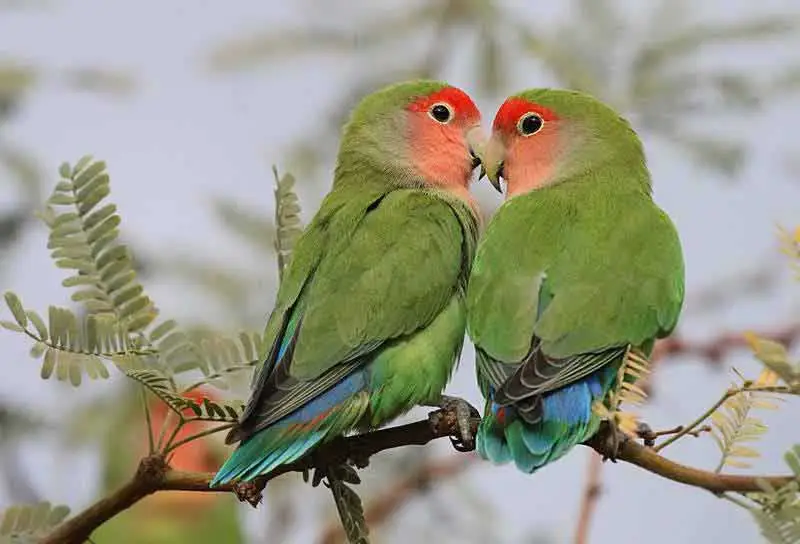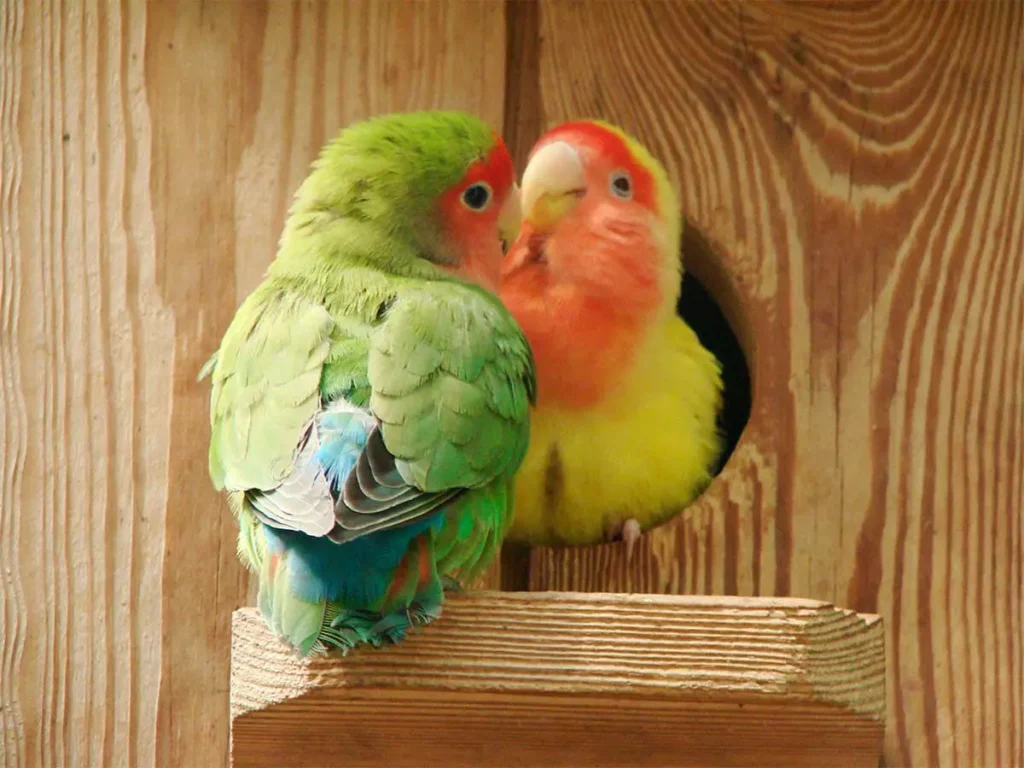
The rosy-faced lovebird (Agapornis roseicollis) is an exotic species of parrot that has captured the hearts of bird enthusiasts worldwide. Also known as the peach-faced lovebird, rosy-collared lovebird, these small, colorful birds are native to arid regions of southwest Africa but have established populations in parts of the United States, particularly in Phoenix, Arizona.
Habitat and Distribution of the Rosy-faced lovebird
The rosy-faced lovebird is a native species in southwest Africa, where it thrives in semi-desert and mountainous areas, as well as broad-leaved woodland habitats. They are primarily found in southwestern Angola and northwest South Africa, but their range extends into Namibia and parts of southwest Angola.
Remarkably, these exotic birds have established thriving populations in residential neighborhoods and urban areas of Phoenix, Arizona, including popular spots like Gilbert Water Ranch. Escaped pet birds and intentional releases have contributed to the growing population of rosy-faced lovebirds in the area, which have adapted well to the local environment. As highly social animals, these species, including peach-faced lovebirds, often congregate in small flocks and sit side by side in pairs or groups. They are known to fly substantial distances in search of food and water, with wild individuals being observed feeding on various sources provided by humans, such as bird feeders and fruit trees. In these urban settings, pairs of lovebirds are commonly seen, and they are often fed by local residents, further helping them thrive in their adopted environment.

Physical Characteristics of a peach faced lovebird
The vibrant green plumage of the rosy-faced lovebird is a distinguishing feature, with a greenish forecrown and a green back. The wings are also predominantly green, with some yellow and blue feathers.
Another characteristic of the rosy-faced lovebird is its blue rump, which contrasts beautifully with its plumage. The tail feathers are also blue, with a brownish base and long strips of white.
The pale pink face of the rosy-faced lovebird, a member of the parrot family, gives the bird its name, with the pink coloration extending from the forehead to the cheeks and chin. This peach face is further complemented by a greenish fore crown, adding to the bird’s unique and vibrant appearance. Both wild and captive peach-faced lovebirds exhibit these striking facial markings, with females often having slightly paler coloration than their male counterparts. The intricate color patterns and variations of these birds are akin to nature’s own twisty tie designs, making them a captivating sight in any environment.
Although there are some similarities, they don’t have to be confused with the red-headed lovebirds.
Behavior and Social Interaction of the Rosy-faced lovebird
Rosy-faced lovebirds are very social animals that live in flocks and congregate around water sources. They are commonly seen in small groups, sitting side by side on branches or perches. When young birds they are known for their affectionate behavior, often preening each other and sitting close together.
A Rosy-faced lovebird is also known for its shrieking calls, which can be quite loud and noisy, particularly during the early morning and late afternoon.
An interesting aspect of rosy-faced lovebirds is their unique sleep position. They often sleep with their heads tucked under their wings while sitting side by side, providing warmth and comfort to one another.

Diet and Feeding
Rosy-faced lovebirds primarily feed on seeds, berries, fruits, and vegetables. In their natural range, they also consume insects and other small invertebrates. In urban environments, these lovebirds have been observed feeding on various food sources provided by humans, such as bird feeders and fruit trees.
Breeding and Reproduction of the Rosy-faced lovebird
The breeding season for rosy-faced lovebirds varies depending on their location. In their native range, the breeding season typically coincides with the rainy season, while in Arizona, they breed during the spring and summer months.
These birds are known for their unique nesting habits, building large communal nests in tree cavities, rock crevices, and man-made structures. They use their strong beaks to tear raw materials such as leaves, twigs, and bark into long strips, which they then twist together to construct their nests.
Female rosy-faced lovebirds lay between three to six eggs, which they incubate for approximately 22 to 25 days. After hatching, both males and females take turns feeding the juvenile birds until they fledge at around six weeks of age.
Pet Trade and Captivity
Rosy-faced lovebirds are popular pet birds due to their small size, colorful appearance, and affectionate nature. They are readily available at pet stores and through breeders, with various color mutations making them even more appealing to pet owners.
These birds are commonly found in animal stores, where they are sold as pairs or individuals. It’s essential to provide proper care, including a spacious cage, toys, and a balanced diet to ensure their health and happiness.
In captivity, rosy-faced lovebirds require a diet consisting of high-quality seeds, fresh fruits, and vegetables. Regular veterinary check-ups are also necessary to monitor their health and well-being. These lovebirds are known for their playful and curious nature, so providing a variety of toys and perches is essential for their mental stimulation.

Conservation of the Rosy-faced Lovebird and Impact on Native Species
While the introduction of rosy-faced lovebirds to Arizona has not had a significant negative impact on native species, it is essential to monitor their populations and any potential competition with native birds for resources. In some cases, these exotic species may compete with native species for nesting sites, food, and water sources. According to the IUCN Red List, the rosy-faced lovebird is currently classified as “Least Concern,” indicating a relatively stable population. Nevertheless, continued monitoring and conservation efforts are crucial to ensure their long-term survival in both native and introduced habitats.
Conclusion
The enchanting world of the rosy-faced lovebird, also known as the peach-faced lovebird, is filled with vibrant colors, affectionate behavior, and intriguing nesting habits. As both wild birds and beloved pets, these small parrots have captivated the hearts of bird enthusiasts around the globe. Whether in their native arid regions of southwestern Africa or their adopted homes in Arizona, these little animals continue to thrive and delight those who encounter them.
